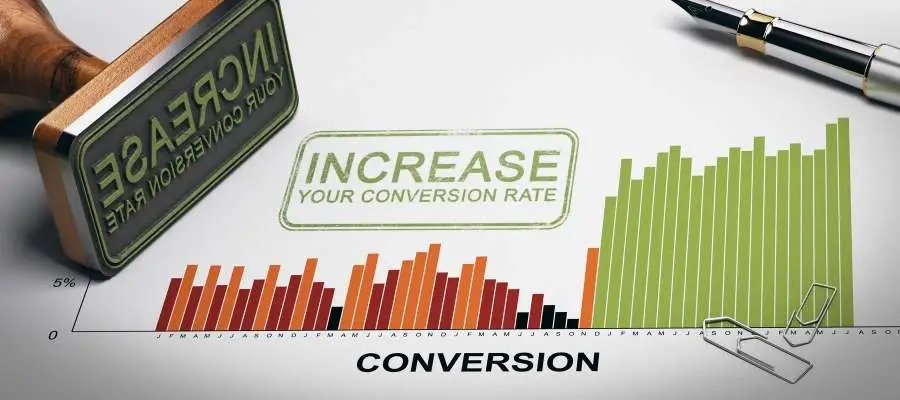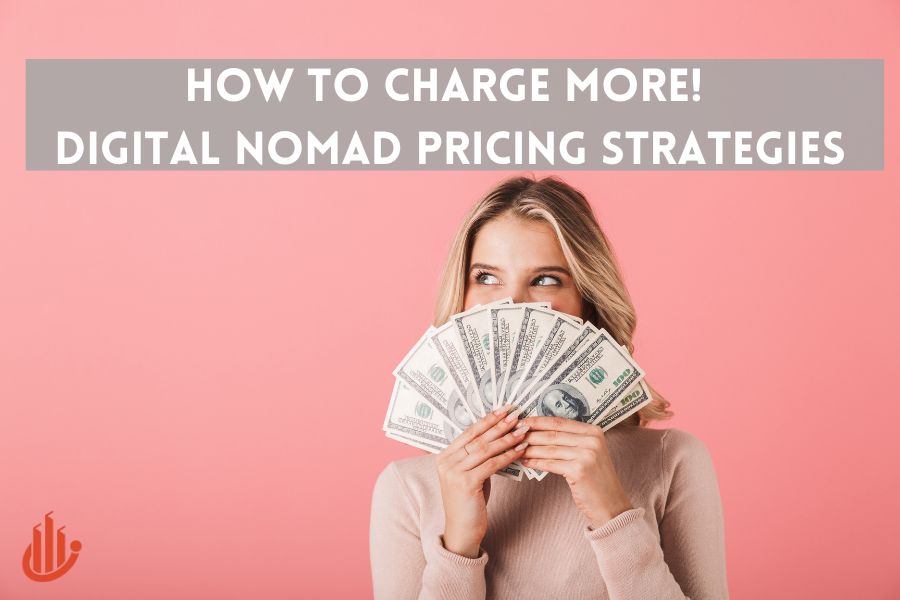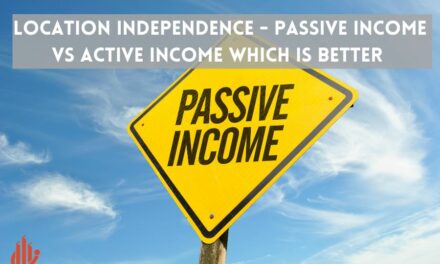Today, I will be discussing an important topic that is of great interest to digital nomads: Digital Nomad pricing strategies and how to charge higher rates. Many freelancers and businesses often find it challenging to charge enough for their services, while others seem to effortlessly charge double or even triple the amount. This raises the question of why some undercharge and how they can rectify the situation.
Furthermore, your pricing strategy has a significant impact on how potential customers perceive your business. It can determine whether you are seen as a budget option or a premium service provider. This aspect alone can make or break the decision for individuals aspiring to become digital nomads. The right pricing strategy can be the difference between barely getting by and having a surplus of cash each week. It can also determine whether you have the confidence to take your work on the road or remain stationary.
In various forums and Facebook groups, you may come across individuals advising to simply raise your prices. However, it is not always as straightforward as it seems. There are often genuine reasons why some individuals are unable to increase their rates without losing business. Nevertheless, there are also cases where the issue lies solely in the psychological aspect, which we will discuss later.
For now, let’s focus on some of the key reasons why you may be struggling to close deals at the desired prices.
Pricing Strategy Analysis: Why You Undercharge
Based on my experience, there are five significant factors that contribute to undercharging.
1. Branding Problems
Have you established a brand for your service or product that gives the impression of being cost-effective compared to your competitors? Do you emphasize price or affordability as a significant factor in your marketing materials and sales copy? If your answer is yes, then you may have a branding issue.
In this situation, you have already positioned your brand as budget-friendly, which means your pricing strategy needs to align with that perception. You are targeting customers who prioritize price, and as a result, you may find yourself negotiating prices with a majority of your clients.

To resolve this issue, it is crucial to assess your branding and ensure that it does not convey the message of “Choose me because I’m cheap.” On the contrary, it is important to emphasize qualities that set your brand apart in a high-end and premium manner.
When branding my services, I have always strived to position them as exclusive and of top-notch quality. It is understandable that many freelancers and business owners have concerns about potentially alienating a significant portion of their target audience. However, this approach also filters out individuals who are merely browsing or seeking low-cost options, allowing you to focus on clients who are willing to invest in a superior service.
Take a moment to review your branding. Does it exude an air of exclusivity and reflect your value proposition accordingly? Or does it inadvertently suggest that you are willing to settle for less?
2. Leads, Quality and Volume
Lead generation is a crucial factor in determining the success of your business. The ability to charge the prices you want largely depends on the quality of leads you generate. Imagine the difference between having a few good leads versus having an abundance of them.
When you have a constant flow of high-quality leads coming in without having to actively pursue them, it gives you the confidence to charge what you’re truly worth. On the other hand, if every lead is scarce and you fear not being able to close any of them, you’ll likely end up quoting lower prices.
To charge what you’re worth, it’s essential to have a reliable lead generation system in place, preferably through inbound methods. Relying solely on outbound lead generation can be challenging due to the time it typically takes.
Once you establish an effective inbound lead generation system, such as SEO, advertising, blogging, or referral partnerships, you’ll not only have more leads but also more time to dedicate to your work. This means you can bill more hours and ultimately earn more.
Many people hesitate to invest in paid advertising or inbound lead generation systems because they perceive them as time-consuming or difficult to build. However, it’s important to think in terms of return on investment (ROI). If you can secure a $5,000 deal with a $100 ad spend instead of spending 20 hours hustling for a client, it’s clear that the advertising investment is the better choice.
Inbound lead generation may require acquiring various skills, but once you master it, it can completely transform your business. Clients will start approaching you regularly, and when leads find you instead of the other way around, they tend to be more willing to pay higher fees, provide repeat business, and cause fewer service issues.
It’s important to identify the specific problems in your lead generation process. It could be a lack of traffic to your offer or poor conversion rates. Avoid jumping to conclusions and ensure you have the right analytics in place to accurately pinpoint and address any issues.
3. Sales Conversion
One major issue that often arises is a poor closing rate. Despite receiving numerous inquiries, only a small portion of them actually result in paying customers. This can be even more troubling if the number of leads is low and the conversion rate is also low.
There are a couple of possible explanations for this problem. Firstly, it could be that the quality of your leads is subpar, with many of them having limited budgets that even your discounted prices are too high for. This means that the root of this issue lies in the lead generation process itself. It is crucial to attract and target individuals who can afford the prices you wish to charge.

Alternatively, the problem could lie in your sales and conversion system. If a significant portion of your persuasion efforts are done in person, then it is necessary to work on improving your sales skills. On the other hand, if the conversion process is automated, such as through a website, then it is essential to analyze and optimize your approach through number crunching, analysis, and split testing.
In either case, it may be beneficial to enhance your sales and online persuasion techniques, such as incorporating video and effective copywriting, to address this issue.
4 – Lack of Personal Touch
Another crucial factor to consider in relation to sales and conversion is the lack of a personal connection between you and your leads. It is important to remember that people not only purchase your product or service, but also buy into the experience of dealing with you. If your leads are excited about the prospect of working with you instead of someone else, they will be more willing to pay a higher price solely based on that connection.
Creating a personal connection does not necessarily have to be solely about you. You can infuse your brand with character and personality to achieve the same effect. However, ultimately, clients, especially those making significant purchases, will require a personal connection.
To streamline the process, you can rely on excellent content and videos on your website. Videos, in particular, are a great way to allow people to feel acquainted with you and understand your expertise even before you have your first conversation.
5 – Self Doubt
A crucial obstacle that may hinder your success is having a lack of confidence in charging what you deserve. Despite having a strong pool of potential clients who appreciate your work and are willing to pay you a good price, you may struggle to raise your prices due to psychological barriers. This is often caused by underestimating the value of your product or service to your clients.

To overcome this challenge, it is recommended to follow up with your clients after delivering your work. Ask them directly about the benefits they have gained from your product or service. While some happy clients may proactively reach out to express their satisfaction, others may require some prompting.
By not asking for feedback, you may mistakenly assume that your work is not as valuable as it truly is. Therefore, it is important to start asking for feedback. Additionally, this approach provides an opportunity to gather testimonials from satisfied clients.
Troubleshooting Pricing Problems
Once we have identified the main causes, it is essential to understand how to address each one. To assist you with this, I have compiled a set of questions for each item. By utilizing these questions, you can effectively troubleshoot your business and ultimately increase the average price at which you are closing deals.
Fixing Branding Issues
Is your branding conveying a sense of high quality or affordability? Does it give the impression of being luxurious or budget-friendly?
Are you presenting a professional image through your website? If you don’t have a website, it is recommended to create one.
Are you infusing a personal touch into your marketing materials, whether it’s through emails, website content, phone calls, advertisements, or any other means of communication?
Fixing Lead Generation
What methods are you using to generate leads? Are you primarily receiving warm leads through referrals or are you seeking out cold leads?
Are you actively seeking leads through outbound hustle methods, or are potential customers naturally finding your business?
If your business is not attracting enough people, what strategies can you implement to increase your reach? Adwords is effective for certain types of businesses, while Facebook ads are more suitable for others.
Do you have a sufficient number of leads? Do you find yourself being selective with projects or do you feel the need to accept every deal that comes your way?
Are there any methods you can utilize to expand your current endeavors? (For instance, boosting advertising expenditure or employing a virtual assistant to provide you with more time.)
Have you analyzed the effectiveness of your lead generation methods in terms of conversion to sale, average client spend, referrals generated, and ease of dealing with the client?
Fixing Conversion Rates
Do you know what percentage of leads you are successfully converting into customers?
In situations where the transaction does not finalize, the primary determinant is often the price, despite the fact that you offered a low quote. Should this be the case, it indicates a lead quality issue.
Do you possess strong sales skills? This does not refer to conforming to the negative image of a pushy car salesman. Instead, it entails having a comprehensive comprehension of buyer psychology and being proficient in techniques such as objection handling and closing deals effectively.
When using proposal documents, it is crucial to ensure that they are both visually appealing and impactful. The appearance and quality of your proposals directly reflect your brand and the level of professionalism you convey. It is important to consider whether your proposals are generic and standardized, or if they are customized to cater to the specific needs of each client.
If you are selling products or services directly through your website, it is crucial to continuously run split tests on various elements such as headlines, copy, and design. This allows you to determine what works best in terms of converting traffic into leads and ultimately into paying customers. Understanding the effectiveness of different traffic sources in generating leads and sales is key to optimizing your online sales process.
Are you currently employing an email funnel strategy in order to effectively pre-sell potential customers prior to their purchase? Are they immediately presented with an offer, or is it provided after they have had the opportunity to familiarize themselves with your brand?
Having a top-notch product and presenting it in a sincere and individualized manner is the key to successful sales. By following this approach, you are already halfway towards achieving your goals. There is no need for sales gimmicks when the quality of your product can speak for itself.
Fixing Lack of Personality
It is quite simple to enhance your brand by incorporating more of your personal touch. It is important for readers to feel like they are engaging with a genuine person when they read your content. Additionally, the design and overall ambiance of your website should align with this authentic experience.
Videos can be a powerful tool in establishing a personal connection with website visitors even before engaging in direct conversations with them.
Take a moment to observe your competitors. Are any of them successfully delivering a remarkable personal experience? Remember, you don’t necessarily have to dive into extensive personal branding efforts if you’re not inclined to. However, it is crucial to ensure that the human aspect behind your business is both noticeable and audible.
Fixing Your Own Doubts
Do you find yourself struggling with the feeling that your work is undervalued?
Make a thorough comparison of your prices with those of your competitors, taking into consideration the quality of your products or services. Assess whether your offerings are significantly superior despite charging lower prices. If your competitors offer better quality, determine the necessary steps to enhance your own quality so that you would be comfortable charging higher prices than they do.
In order to overcome limiting beliefs, it is crucial to gather concrete evidence that disproves these beliefs. This can be done by collecting positive testimonials from satisfied clients. Once you have this evidence, it is important to take the leap and charge higher prices. By doing this, you can observe the outcomes and see the positive impact it has on your business.
Automating the Process
It is beneficial to minimize your involvement in lead generation and sales closing. This may appear to contradict the importance of a personal touch, but allow me to clarify.
Indeed, when dealing with large clients, it is often necessary to dedicate a significant amount of personal time to each one in order to successfully finalize the agreement. However, it is important to note that certain aspects of the process can still be automated to streamline efficiency.
Why settle for achieving goals through Skype when you have the opportunity to accomplish them through sales copy that can reach 100 website visitors simultaneously? Why waste time saying things in person when you can convey your message effectively through a video?

Why go through the hassle of handling basic administrative tasks when you can delegate them to an assistant at a fraction of your hourly rate?
The key is understanding your target customer well enough to anticipate their thoughts in advance and creating an automated process that delivers consistent results on a larger scale.
Take a step back and evaluate your tasks: Can you streamline them into a process that eliminates the need for you to do them manually every time? Streamline your business operations to save time wherever possible. Remove obstacles and witness your business flourish.
By leveraging this approach, you can enhance your lead generation system and refine your sales skills to attract more high-paying customers.
Raising Prices for Existing Clients
If you have an existing client base and are considering raising your prices, it’s important to know how to do it and how to explain it. First and foremost, it’s crucial to understand that increasing prices is a normal and expected part of business growth. While it may feel like a big deal to you, it may not be as significant to your clients.
To communicate the price increase, simply explain that you haven’t revised your prices in a long time and that you believe they are already receiving excellent value for the service you provide. Let them know that you will be introducing a modest increase in prices. Keep the message short and concise. It’s also helpful to give them some prior notice before implementing the price change.
If it helps, you can mention that your services are in high demand and it no longer makes sense to work at your previous lower rates. Other business owners, in particular, will understand the economic aspect of this reasoning.
It’s important to actually be in demand, which is where lead generation and sales conversion strategies come into play. Additionally, you can consider introducing a new add-on to your service to justify the price increase. This should be something simple and cost-effective for you to add, so it doesn’t eat into your profits.
The Psychology of Charging More
Lastly, it is essential to distinguish between structural issues within your business, such as lead generation and conversion, and personal barriers that may be hindering your progress. To address the latter, there are two effective approaches. Firstly, you can build confidence in the value of your service by seeking feedback from your clients and understanding the extent to which they appreciate your work. Secondly, you can enhance your service by continuously striving for improvement.
Why not consider implementing both strategies simultaneously?





